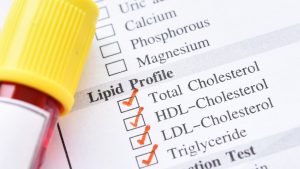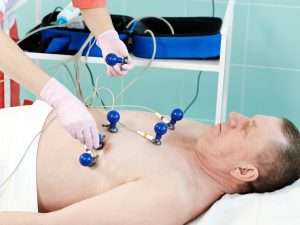Understanding POTS and Its Impact on Daily Life
Postural Orthostatic Tachycardia Syndrome (POTS) is a chronic disorder of the autonomic nervous system that disrupts the body’s ability to regulate blood pressure when moving from a lying or sitting position to standing. This condition results in a rapid increase in heart rate and can lead to a variety of symptoms, including dizziness, fatigue, and nausea, that significantly affect daily activities. Although POTS is most commonly diagnosed in young women, it can impact individuals of all ages and often goes undiagnosed due to its complex presentation.
Why Does POTS Cause Dizziness?
In healthy individuals, the autonomic nervous system quickly adjusts blood flow upon standing, maintaining stable blood pressure. In people with POTS, this adjustment is impaired. Blood pools in the lower extremities, reducing the volume returning to the heart and brain, which causes:
- Rapid heart rate (tachycardia)
- Dizziness and lightheadedness
- Nausea and general discomfort
Early recognition and diagnosis are crucial in managing POTS effectively and preventing further complications.
Recognizing the Symptoms of POTS
While POTS symptoms can vary, some common indicators include:
- Frequent Dizziness Upon Standing: Feeling lightheaded or unsteady.
- Rapid Heart Rate: Noticeable palpitations or a racing heartbeat.
- Chronic Fatigue: Persistent tiredness that interferes with daily activities.
- Brain Fog: Difficulty concentrating or experiencing memory lapses.
- Nausea & Digestive Discomfort: Stomach upset or indigestion.
- Cold Extremities: Hands and feet that feel unusually cold.
- Exercise Intolerance: Rapid exhaustion even with minimal activity.
- Shortness of Breath: Trouble catching your breath during routine activities.
- Sleep Disturbances: Insomnia or poor sleep quality.
If you experience several of these symptoms consistently, it’s important to consult a healthcare professional.
What Causes POTS and Who Is at Risk?
POTS is a multifactorial condition with several potential triggers and risk factors:
Potential Causes of POTS
- Viral Infections: Some individuals develop POTS following a viral illness, suggesting that an infection might trigger an immune response that affects autonomic regulation.
- Autoimmune Disorders: Conditions like Ehlers-Danlos Syndrome (EDS) and lupus are often associated with POTS, pointing to immune system involvement.
- Chronic Fatigue Syndromes: POTS frequently coexists with chronic fatigue syndrome and fibromyalgia, linking prolonged fatigue with autonomic dysfunction.
- Hormonal Imbalances: Fluctuations in hormones—especially in women—can impact blood pressure regulation.
- Genetic Predisposition: A family history of autonomic disorders may increase the likelihood of developing POTS.
- Physical Deconditioning: Extended periods of inactivity or bed rest can weaken the body’s ability to regulate circulation.
Who Is at Risk?
- Women (Aged 15-50): POTS is most commonly diagnosed in young women.
- Individuals Recovering from Illness or Surgery: A severe infection or hospitalization can trigger POTS.
- Patients with Autonomic Dysfunction: Those with pre-existing issues affecting the autonomic nervous system are at higher risk.
- People with Joint Hypermobility Disorders: Conditions like EDS are often seen alongside POTS.
- Individuals with a Sedentary Lifestyle: Lack of physical activity can contribute to poor circulatory regulation.
How Is POTS Diagnosed?
Accurate diagnosis of POTS requires a comprehensive evaluation. Specialists typically use a combination of tests, including:
- Tilt Table Test:
The tilt Table Test measures heart rate and blood pressure changes as you move from a supine to an upright position. A significant increase in heart rate without a corresponding drop in blood pressure supports a POTS diagnosis. - 24-Hour Blood Pressure and Heart Rate Monitoring:
24-hour Blood Pressure monitoring tracks fluctuations throughout the day to identify patterns of autonomic dysfunction. - Echocardiography:
Echocardiography, Although POTS is not a primary heart condition, this ultrasound helps rule out structural heart problems. - Holter Monitor:
The Holter Monitor, a 24- to 48-hour recording device that detects irregular heart rhythms and abnormal rate responses. - Vascular Testing:
Studies such as carotid or venous Doppler assessments evaluate blood flow and circulation issues that contribute to symptoms.
At The Heartbeat Clinic in Dallas, our advanced diagnostic tools enable us to confirm a POTS diagnosis and create a tailored treatment plan.
Effective Treatment Options for POTS
While there is no single cure for POTS, a personalized treatment plan can greatly alleviate symptoms and improve quality of life. Common treatment strategies include:
1. Lifestyle Modifications
- Increased Salt and Fluid Intake:
Boosting blood volume through hydration and a high-sodium diet (under medical supervision) can improve circulation. - Compression Garments:
Wearing compression stockings or abdominal binders helps prevent blood pooling. - Structured Exercise Program:
Gradually increasing physical activity—especially recumbent exercises—can strengthen cardiovascular health.
2. Medications
- Beta-Blockers:
To help control heart rate. - IV Fluids:
For severe cases of dehydration or low blood volume. - Circulation-Enhancing Medications:
Prescribed based on individual symptoms to stabilize blood pressure and improve blood flow.
3. Dietary Adjustments
- High-Sodium Diet:
Helps maintain blood volume. - Small, Frequent Meals:
Prevents postprandial dips in blood pressure. - Avoiding Caffeine and Alcohol:
Both can worsen symptoms by contributing to dehydration.
Why Choose The Heartbeat Clinic for POTS Treatment?
At The Heartbeat Clinic in Dallas, we specialize in a comprehensive, patient-centered approach to diagnosing and treating POTS. Our services include:
- Comprehensive Diagnostic Testing:
Including tilt table tests, 24-hour Holter monitoring, and autonomic nervous system evaluations. - Personalized Treatment Plans:
Customized strategies incorporating lifestyle modifications, medications, and physical therapy. - Ongoing Patient Support:
Regular follow-up appointments and patient education to help manage symptoms and improve overall well-being. - Advanced IV Fluid Therapy:
For rapid symptom relief in severe cases.
If you experience frequent dizziness or other symptoms associated with POTS, early diagnosis and intervention are key to preventing symptom progression and improving daily functioning.
When Should You See a POTS Specialist?
If you regularly experience dizziness upon standing, rapid heart rate, or any of the symptoms discussed above, it’s important to seek a professional evaluation. Early intervention can prevent worsening symptoms and enhance your quality of life.
Schedule a consultation with our POTS specialists at The Heartbeat Clinic in Dallas today to begin your journey toward better health.
Conclusion
Dizziness upon standing can be more than just a minor inconvenience—it may be a sign of POTS, a condition that affects circulation and overall well-being. Recognizing symptoms early and seeking specialized care can make a significant difference in managing the condition. Don’t ignore persistent symptoms; take control of your health by consulting a POTS specialist in Dallas. Contact us today!
Frequently Asked Questions (FAQs)
- What is the most common symptom of POTS?
The most common symptom is dizziness upon standing, often accompanied by a rapid heart rate and fatigue. - How is POTS diagnosed?
Diagnosis typically involves a tilt table test, 24-hour blood pressure and heart rate monitoring, echocardiography, and Holter monitoring. - Can POTS be cured?
There is currently no single cure for POTS, but its symptoms can be managed effectively with lifestyle modifications, medications, and dietary changes. - What lifestyle changes help manage POTS symptoms?
Increasing salt and water intake, using compression garments, and following a structured exercise program are common recommendations. - Does diet play a role in managing POTS?
Yes, a high-sodium diet, small frequent meals, and avoiding caffeine and alcohol can help stabilize symptoms. - Can POTS develop after an illness?
Yes, many individuals develop POTS following a viral infection, surgery, or prolonged bed rest. - Is POTS more common in women?
Yes, POTS is more frequently diagnosed in women aged 15 to 50, though it can affect anyone. - Can exercise help manage POTS?
Yes, gradual and structured exercise programs can improve circulation and reduce symptoms over time. - How does hydration impact POTS symptoms?
Staying well-hydrated is essential for maintaining blood volume and reducing dizziness. - Where can I find specialized POTS treatment in Dallas?
The Heartbeat Clinic in Dallas offers comprehensive POTS diagnosis and personalized treatment plans. Contact us today to learn more.
Disclaimer
This article is for informational purposes only and is not a substitute for professional medical advice. Always consult with a qualified healthcare provider or POTS specialist for an accurate diagnosis and personalized treatment recommendations.






